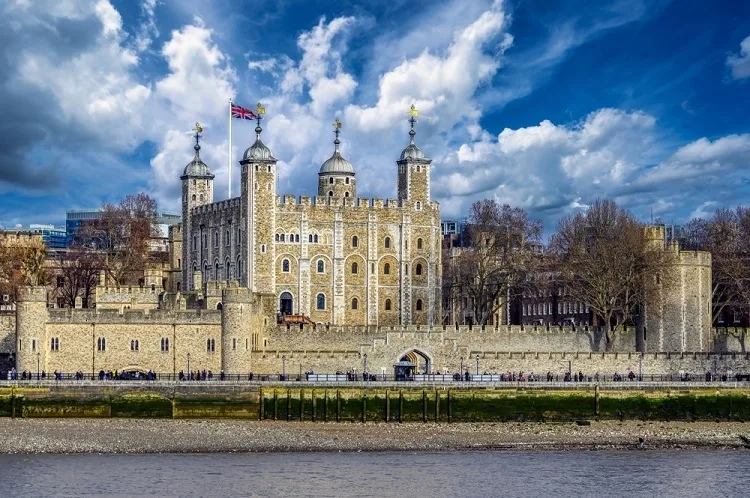The Tower of London is one of the most iconic ancient landmarks inside the United Kingdom. It has witnessed over 1,000 years of British history, along with royal ceremonies, executions, imprisonment, or even serving as a zoo! If you’re interested in British history, this text will uncover 10 Facts About the Tower of London with a view to marvel you. This information now not only highlights its wealthy past however also gives an explanation for why it remains a top traveler destination within the global.
In this article, we’ll pass beyond the basics and reveal historical, architectural, and cultural details you won’t recognize. Let’s dive in!
Fact 1: The Tower Was Built by William the Conqueror
The first and perhaps the maximum essential reality is that William the Conqueror constructed the Tower of London in 1078 after his successful conquest of England in 1066. The tower served as a fortress, royal palace, and symbol of Norman electricity. At the
time, it became one of the maximum bold fortresses in Europe, made from stone imported from France.
Why Was It Built?
The essential reason of the White Tower, the vital shape, was to defend London and assert Norman dominance over the English human beings. It later expanded into a huge complex with a couple of towers and partitions.
Fact 2: It Served as a Royal Palace and Residence
One of the most exciting facts about the Tower of London is that it became not just a jail; it also functioned as a royal palace for centuries. Monarchs consisting of Henry III and Edward I lived there, and it turned into prepared with pricey royal flats.
Key Highlights:
- It had a royal chapel, kitchens, and indulgent dwelling areas.
- The Tower hosted coronation celebrations and royal feasts.
Today, you could still go to the medieval palace rooms that have been restored for vacationers.
Fact 3: The Tower Was a Prison for Famous Figures
When human beings consider the Tower of London, they often associate it with prisoners and executions and rightly so. Over the centuries, the Tower housed a number of the most well-known prisoners in English records.
Famous Prisoners:
- Anne Boleyn – Wife of Henry VIII, executed in 1536.
- Guy Fawkes – The guy at the back of the Gunpowder Plot of 1605.
- Elizabeth I – Before turning into queen, she became held here through her sister Mary I.
Fact 4: It Was the Site of Famous Executions
Not all prisoners had been executed, however a few excessive-profile executions did take place at the Tower Green. These were usually noble prisoners who had been spared the humiliation of public execution.
Executed on Tower Green:
- Anne Boleyn
- Catherine Howard (Henry VIII’s fifth spouse)
- Lady Jane Grey
Fact 5: The Tower Housed the Royal Menagerie
Yes, you study that proper the Tower of London once had its own royal zoo! For over 600 years, unique animals such as lions, elephants, or even polar bears had been saved at the Tower.
Details:
- The royal menagerie began inside the 1200s when King John obtained exceptional animals as presents.
- It was closed inside the 19th century, and animals were moved to the London Zoo.
- Today, sculptures of animals can be seen around the Tower so as not to forget this specific history.
Fact 6: It Is Home to the Crown Jewels
One of the largest sights of the Tower of London today is the Crown Jewels series. This priceless collection includes royal crowns, swords, and ceremonial regalia utilized in coronations.
Key Facts About the Crown Jewels:
- Over 23,000 gemstones are a part of the collection.
- The most well-known gem is the Koh-i-Noor diamond.
- Guards referred to as Yeoman Warders defend them 24/7.
Fact 7: The Ravens of the Tower
Another charming fact is the presence of ravens at the Tower of London. Legend has it that if the ravens ever go away from the Tower, the dominion will fall.
Interesting Points:
- At least six ravens are continually stored on the Tower.
- They have their wings clipped to prevent them from flying away.
- Each raven has a name and is cared for by means of the Raven master.
Fact 8: The Tower Was Once a Royal Mint
Few humans recognize that the Tower of London is also home to the Royal Mint, where cash of the world was made for more than 500 years.
Details:
- Mint operations were executed from the late 13th century till 1810.
- Workers and their households lived in the Tower complex.
- The minting method was distinctly secretive and heavily guarded.
Fact 9: It Survived the Great Fire of London
The Great Fire of London in 1666 destroyed an awful lot of the city, but the Tower remained safe. Thanks to its stone creation and protective moat, the hearth did not reach the fortress.
Fact 10: It’s One of London’s Top Tourist Attractions
Today, the Tower of London is a UNESCO World Heritage Site and one of the most visited landmarks inside the UK. Millions of traffic come every year to peer at the Crown Jewels, meet the Yeoman Warders, and study its brilliant history.
Detailed Table: Timeline of the Tower of London’s History
Before we conclude, right here’s a comprehensive timeline of principal occasions associated with the Tower of London. This table will assist you recognize its evolution over the centuries.
10 Facts About the Tower of London
The Tower of London is a historic fortress located on the north bank of the River Thames in central London.
It was originally built by William the Conqueror in 1078 as part of the Norman conquest of England.
The Tower has served as a royal palace, prison, armory, and even a zoo throughout its history.
One of its most famous features is the Crown Jewels of the United Kingdom, which are still displayed there today.
The Tower is guarded by the iconic Yeoman Warders, also known as Beefeaters, who have become a symbol of British heritage.
Introduction to the Table:
The Tower of London has witnessed extra than one thousand years of British history, from its construction in the eleventh century to its present-day role as a first-rate vacationer appeal. The following desk summarizes the key ancient occasions associated with this iconic fort.
| Year/Period | Event | Significance |
|---|---|---|
| 1078 | Construction by William the Conqueror | Foundation of the Tower as a fortress and palace. |
| 1100s | Royal residence established | Used as a royal palace for Norman kings. |
| 1200s | Start of the Royal Menagerie | Exotic animals gifted to the monarchy. |
| 1303 | Attempted theft of Crown Jewels | Highlighted need for stronger security. |
| 1500s | Executions of Anne Boleyn & others | Became infamous for political imprisonments. |
| 1605 | Imprisonment of Guy Fawkes | Gunpowder Plot conspirator held at the Tower. |
| 1666 | Survived the Great Fire of London | Remained intact during city-wide destruction. |
| 1800s | Closure of the Royal Menagerie | Animals moved to London Zoo. |
| 1810 | End of Royal Mint operations | Mint relocated from the Tower. |
| Present | Major tourist attraction | Home to Crown Jewels and Yeoman Warders. |
Frequently Asked Questions (FAQ)
1. How old is the Tower of London?
The Tower of London is over 940 years antique, built in 1078 with the aid of William the Conqueror.
2. Can you visit the Tower of London nowadays?
Yes, the Tower is open to the general public and is considered one of London’s maximum popular points of interest.
3. Are the Crown Jewels real?
Yes, the Crown Jewels displayed at the Tower of London are proper and used in royal ceremonies.
Conclusion
The Tower of London isn’t only a castle; it’s miles an image of British history and tradition. From royal palaces and prisons to housing the Crown Jewels and ravens, it holds limitless memories within its partitions. Whether you’re a records lover or planning a trip to London, these 10 data about the Tower of London come up with a deeper appreciation of this legendary web page.








Leave a Reply